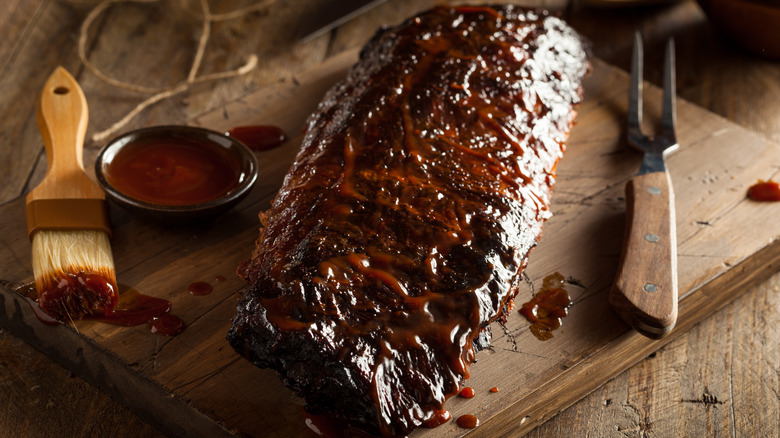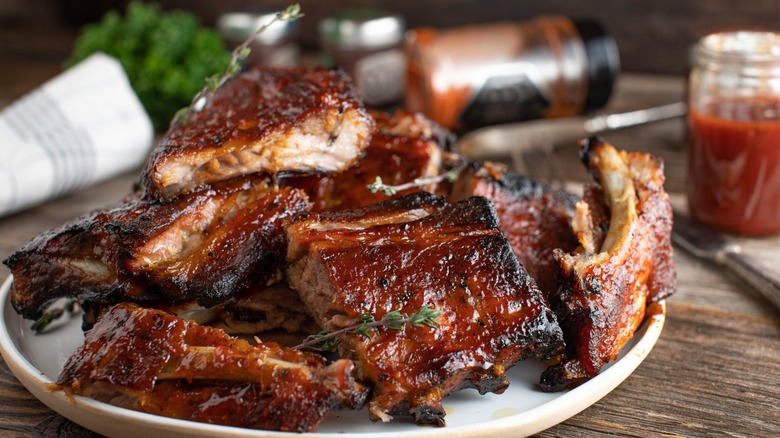The 3-2-1 Barbecue Method For Unbelievably Tender Pork Ribs
Cooking pork ribs is a bit of a balancing act. Researching methods and recommendations can turn into quite the rabbit hole; you not only have to decide what kind of ribs you want to prepare, but you also will encounter a slew of different cooking methods — from oven to smoker to grill — and a host of strongly-held opinions about the proper done-ness. For example, BBQ Host definitively recommends that you shouldn't cook ribs until they fall off the bone, explaining that meat that falls off the bone is overcooked and will have a mushy texture.
The Barefoot Contessa, Ina Garten, clearly disagrees, as she's developed her own method for preparing St. Louis-style ribs so they're fall-off-the-bone tender. While we know Tasting Table readers have weighed in with their preference for the best kind of ribs to barbecue (spoiler alert: it's baby back ribs, followed by spare ribs), your choice of ribs may vary, determined by what happens to be the best value on the day you're shopping or the length of time you have to prepare your ribs. And that means one of the best tools in your rib-cooking arsenal may be a formula — rather than a specific recipe — that's adaptable based on what kind of ribs you're cooking and your preferences for how you like them done, whether that's falling off the bone or a little less done.
3-2-1 is the formula for tender pork ribs
If you like your ribs smoky and falling off the bone tender, you don't have to look any further than smoker manufacturers Oklahoma Joe's and Traeger for their takes on the 3-2-1 method for perfect pork ribs. The method is simple; pork ribs get a flavorful rub and go right into the smoker for three hours of low-and-slow smoky heat. The smoked ribs are then wrapped in either peach butcher paper or aluminum foil (Traeger also recommends adding some liquid, like apple juice) and returned to the heat for another two hours. Finally, the ribs are unwrapped, slathered in barbecue sauce, and returned to the smoker for one final hour. The result is smoky, tender, perfectly sauced pork ribs.
The beauty of the 3-2-1 method is that it can be adapted to suit the kinds of ribs you're cooking as well as to accommodate your preferences. BBQ Host explains some of the adaptations, like the 2-2-1 (two hours of smoke, two hours wrapped, and one hour unwrapped with sauce) that may be better for baby back ribs since they're a smaller and leaner cut than spare ribs or St. Louis style ribs. It's the 3-2-1 formula that gives you the framework for success and is an ideal starting point, which can be modified as you like, based on your results. The combination of smoke, wrapping the ribs so they don't dry out, and finishing with sauce is a winning method for turning out perfectly tender pork ribs.

